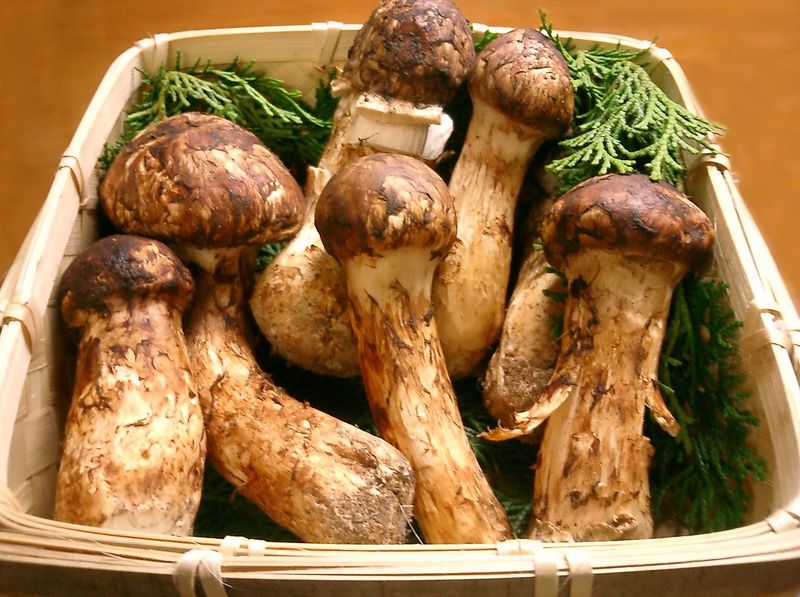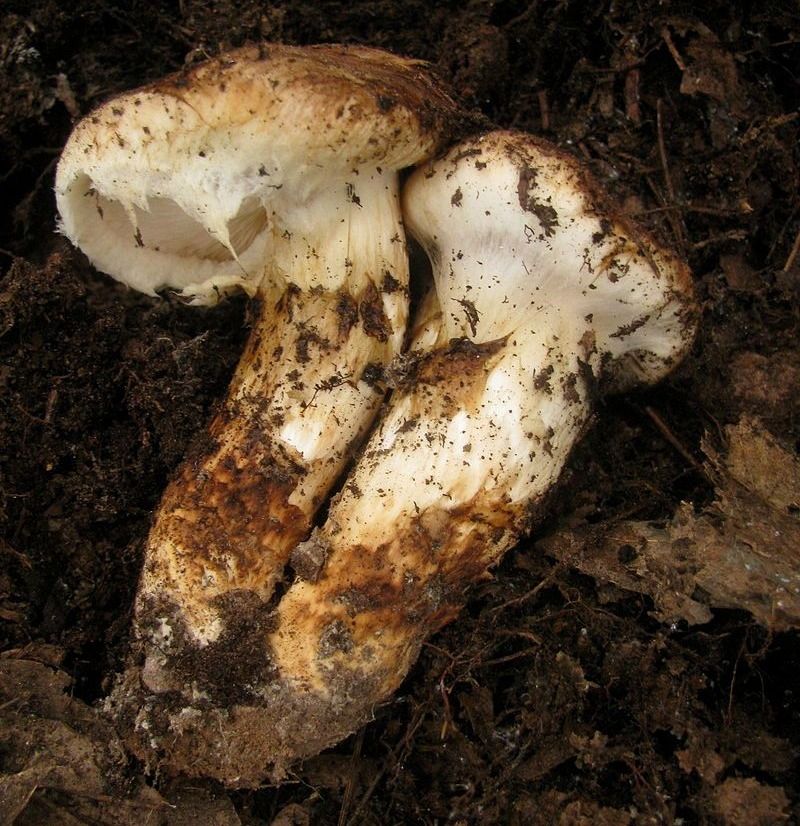Why Is Matsutake Mushroom So Expensive?
Exploring the Reasons Behind the High Price of Matsutake Mushrooms

The Matsutake, also referred to as the pine mushroom as the term "Matsu" translates to pine, while "take" signifies mushroom, emphasizing their pine-associated origin.
What Is Matsutake Mushroom?
The Matsutake mushroom, scientifically known as Tricholoma matsutake, is a rare and sought-after edible fungus native to Japan, China, Korea, and North America. It's renowned for its distinct spicy-aromatic scent and robust flavor.
Every year, from September to January, the Matsutake mushroom, part of the Tricholoma genus, captivates Japan's culinary enthusiasts.
Found primarily in coniferous forests, its rarity due to human intervention, pests, and shrinking habitats in Japan has pushed its prices upwards, sometimes reaching $2000 per kilogram.
Although not as expensive as white truffles, Matsutake is still among the world's priciest fungi. Beyond its culinary value, it holds cultural significance, epitomizing the flavors of the Japanese fall season.
Here's The Reasons of Matsutake Mushroom's High Value:

1. Rare Habitat
Matsutake thrive in very specific environments, primarily within the roots of red pine forests. The specific growing conditions make it difficult to find large volumes of naturally occurring Matsutake.
2. Shrinking Habitat
The habitats conducive to Matsutake growth are increasingly under threat. An invasive worm, the pinewood nematode originating from North America, has been damaging the red pine forests where the mushrooms grow.
3. Difficulty in Cultivation
Unlike some other varieties of mushrooms, Matsutake are extremely challenging to cultivate artificially. This means almost all Matsutake consumed are wild, further limiting their availability.
4. IUCN Designation
Their vulnerable status, as declared by the International Union for Conservation of Nature (IUCN), reflects the challenges faced in their natural habitat and production.
5. Limited Harvesting Window
These mushrooms can be harvested only once a year from September through November. They are also highly sensitive to climatic changes; overly hot or dry seasons can drastically reduce their numbers, adding to their scarcity.
6. Competition from Wildlife
Matsutake aren't just a favorite among humans. Local wildlife competes for these mushrooms, further decreasing the available yield for commercial harvest.
7. Rising Demand
With increased disposable income in Japan over recent years and the mushroom's elevated cultural status, the demand for Matsutake has soared.
Coupled with their declining availability, this heightened demand naturally pushes prices upward. For instance, recently three matsutake mushrooms were auctioned off for 930,000 yen, about $6,200 in Tambasasayama Market.
8. Annual Harvest Decline
The total annual harvest in Japan has decreased significantly, now totaling less than 1000 tonnes. This limited supply against a backdrop of rising demand contributes to the hefty price tag.
Given these factors, the price of Matsutake mushrooms reflects their rarity, cultural significance, and the challenges involved in their harvest and conservation.
Whether they're worth their cost is subjective, but for many, the unique taste and cultural significance justify the expense.
Where Can We Find Matsutake Mushrooms on the Menu?
Often, Matsutake mushrooms grace the dishes of elite dining spots, particularly in kaiseki, ryotei, and sushi venues.
The chefs in these establishments tend to use a light touch in their preparation, emphasizing the mushroom's inherent scent.
Among the popular methods of serving are adding them to gentle soups, folding them into the savory chawanmushi (egg custard), using them as a key ingredient in the celebrated 'matsutake gohan' rice concoction, or simply chargrilling them, finishing with a dash of salt and a hint of sudachi (a type of Japanese citrus).
Moreover, as a mark of esteem and appreciation, beautifully packed selections of Matsutake are often gifted, especially when someone wishes to make a notable impression on leaders or relatives.
What Does the Matsutake Mushroom Taste Like?
The flavor of these mushrooms is commonly describe as 'spicy', 'intense' or even 'cinnamon.' Their robust aroma can dominate over other ingredients in a dish, ensuring their presence is distinctly felt. Their pine-like undertone is fitting, considering they thrive beneath pine duff in their natural habitat.
How Expensive is Matsutake Mushroom?
To savor the distinctive fall taste of matsutake mushrooms, be prepared to spend. While they might not reach the lofty price points of luxury fungi such as white truffles, with a price tag hovering around $1000 per pound (roughly €900 for half a kilogram), they are on par with certain exclusive types of black truffle. A standard pack containing roughly eight of these mushrooms might set you back about $500.
Historical Significance for Japanese
Matsutake mushrooms hold special significance for the Japanese, not just as a culinary delight but also as an emblem of cultural. Here's why:
Historical Significance: Matsutake mushrooms have been treasured in Japan since ancient times. They are mentioned in historic texts and documents, such as the Manyoshu, a renowned collection of Japanese poetry from the 7th century. Their prominence in such ancient writings indicates how deeply rooted they are in Japanese history.
Symbolism: These mushrooms signal the arrival of autumn. As Japan has a deeply seasonal culture where different times of the year are marked by specific foods, festivals, and traditions, the appearance of matsutake on market shelves and in meals denotes the transition from summer to fall.
Gifting Tradition: Matsutake has historically been a prestigious gift. They were often presented by nobility and even by members of the Japanese Imperial family. In modern times, they remain a popular and esteemed gift, especially when one wishes to impress or show deep appreciation.
Unique Flavor and Aroma: Their distinct flavor and aroma, often described as spicy, piney, and autumnal, make them a unique ingredient in Japanese cuisine. They aren't just a food but an experience, cherished in traditional dishes.
Scarcity and Value: Their scarcity, partly due to their specific growth requirements under pine trees and the diminishing pine forests in Japan, adds to their allure. This rarity combined with their historical and cultural significance inflates their value, making them a luxury.
Culinary Tradition: They are a staple in traditional Japanese dishes, especially in high-end establishments like kaiseki and ryotei restaurants. Their preparation is often minimalistic to allow their natural flavors to shine, making them a highlight in many traditional meals.
In summary, the importance of matsutake mushrooms for the Japanese isn't just about their taste. It's a confluence of history, culture, tradition, and nature, making them deeply cherished in the country.
Frequently Asked Question
What Are the Ways of Eating Matsutake Mushroom?
Matsutake mushrooms can be enjoyed both raw and cooked. Before consuming, it's essential to clean them thoroughly, especially scrubbing the cap. When you cook them, opt for a minimalist approach to let their unique flavor and aroma shine through. A simple sauté with some olive oil and a pinch of salt works well.
In traditional Japanese dishes, matsutake is often thinly sliced and grilled, seasoned with shoyu and mirin. They are also a favorite addition to soups like sukiyaki. Another popular way to relish them is in matsutake gohan, a flavorful rice dish where the mushrooms are cooked with ingredients like dashi, mirin, rice wine, and soy sauce.
Where Are Matsutake Mushrooms Found?
Matsutake mushrooms are primarily found in regions of Japan, Korea, and the Pacific Northwest of North America, especially areas of Northern California and Oregon.
They have a preference for growing near the base of pine trees, coniferous firs, and certain hardwoods such as tanoaks and madrone. In Japan, they are particularly associated with the country's red pine forests.
These mushrooms naturally emerge beneath the leaf litter on forest grounds and resist domestic cultivation efforts. This specificity in their growing conditions, combined with the inability to farm them, ranks them among the world's priciest mushrooms.
How Should You Store Matsutake Mushrooms?
To ensure your Matsutake mushrooms remain fresh:
1. Cleaning: Examine the gills to ensure no dirt is trapped. Gently brush off any dirt using a damp cloth, avoiding a direct wash. If you're worried about concealed insects or soil, briefly immerse them in a water-filled bowl. Trim any tough parts of the stem and dry the mushroom carefully.
2. Storing Short-term: If you aren't consuming the mushrooms right away, place them in a breathable setting by wrapping them in a moistened paper towel. Then, insert them into a plastic bag. Ideally, store them in the refrigerator and consume within a week to retain their distinctive aroma.
3. Freezing for Long-term Storage: Matsutake mushrooms can be preserved in the freezer for up to two to three months. When ready to use, either cook directly from their frozen state or, if slicing is necessary, allow them to partially thaw just enough for easy cutting.
Remember, while they can be stored, their unique aroma diminishes over time. So, for the best flavor experience, it's recommended to enjoy them soon after purchase.
What Are The Nutrition Value of Matsutake Mushroom?
Matsutake mushrooms are nutritionally dense, boasting a protein content of 20.3%, fiber at 29.10%, and carbohydrates making up 36.67%. Additionally, they're a valuable source of minerals and vitamins while maintaining a low fat content.
Notably, the mushroom contains higher amounts of unsaturated fatty acids like oleic, linoleic, and palmitic acids compared to their saturated counterparts. Other beneficial compounds, such as polysaccharides, ergosterols, terpenoids, and polyphenols, are also found in matsutake.
Beyond being a nutritious food source, the unique composition of these mushrooms can enhance immunity and may help in reducing the risk of various chronic diseases.


